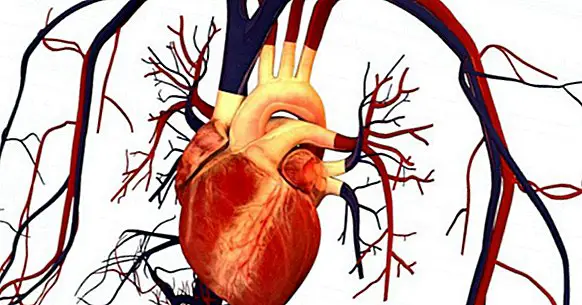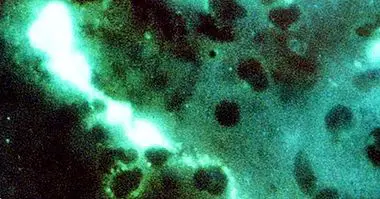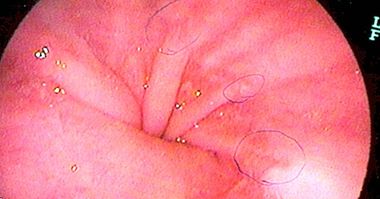The 7 most common types of cardiovascular diseases (and symptoms)
According to the World Health Organization (2017), cardiovascular diseases are a group of disorders of the heart and blood vessels that is currently the leading cause of death around the world. These diseases cause a greater number of deaths in low-income countries (at least three quarters of deaths).
In this article we will see What are the 7 most common types of cardiovascular diseases , as well as its main symptoms and risk factors.
- Related article: "This is how stress can cause heart attacks"
How are cardiovascular diseases defined?
Cardiovascular diseases, also known as "heart disease," are defined as a group of disorders that affect the cardiovascular system. The latter is responsible for transporting blood from the heart to the circuit of elastic tubes that we know as blood vessels; where different types of veins, arteries, arterioles and capillaries are included.
They can start in different parts of the cardiovascular system. That is to say, they can manifest directly in the heart (cardiac type) or they can be peripheral , which means that they appear in the surrounding organs. Likewise, cardiovascular diseases can occur only once, or they can develop chronically. Therefore, cardiovascular diseases have been divided into several types.
7 types of cardiovascular diseases and their symptoms
In general, the pathological activity of the blood vessels and the heart has no previous symptoms, even when the disease has started its development. That is, that cardiovascular diseases may have asymptomatic phases . By the same they usually become visible until some attack to the heart, the brain, or the near organs is occurring.
The general symptoms of the latter are persistent pain in the chest, arms, left shoulder, jaw or back (these two are more frequent in women). These pains may be accompanied by breathing difficulties (dyspnea), nausea or vomiting.
Following the data offered by the World Health Organization (2018), we will describe the 7 main types of cardiovascular diseases below: hypertension, coronary heart disease, cerebrovascular disease, heart failure, rheumatic heart disease, congenital heart disease and cardiomyopathies.
1. High blood pressure
Arterial hypertension, also known as high pressure , occurs when the pressure levels mark a minimum of 140 mmHg of systolic pressure; or 90 mmHg of diastolic pressure.
The above values are indicators that the blood is not traveling through the vessels in an adequate and fluid way, which can cause a heart attack. Some symptoms are headaches, dizziness or vertigo, redness, vision and hearing disorders, among others.
However, as we have said before, many people do not present signs or symptoms, until they translate into a medical complication. Hypertension is considered a type of chronic cardiovascular disease, which is also an important precursor of other diseases or major cardiovascular accidents.
2. Coronary heart disease
It is also known as myocardial infarction. In this case the blood vessels that are responsible for carrying blood to the heart are affected . It is characterized by a narrowing of the latter, which prevents enough blood and oxygen from reaching the muscle pump.
The narrowing of the blood vessels is usually caused by the hardening of the arteries, such as consequence of the accumulation of fatty material and other substances . Symptoms include severe chest discomfort, pain that occurs with important physical or emotional activities, a feeling of heaviness and fatigue.
3. Cerebrovascular disease
In this case, the vessels that supply blood and oxygen to the brain are also affected. It can cause permanent, or momentary, damage to the brain.
When the disease occurs suddenly, it can also be called apoplexy and is usually caused by intracerebral bleeding or by a blood clot deposited in the brain. According to the specific area can generate blindness, vertigo, ataxia, visual disturbances, amnesia, dysphagia, urinary incontinence, mutism, hemiplegia, aphasia, among other manifestations related to brain activity.
Cardiovascular diseases can cause strokes (strokes or cerebral infarcts), which consist of the interruption of blood flow and oxygen that travels to the brain as a result of the loss of tissue in the latter. Along with coronary heart disease, cardiovascular diseases are the ones that cause the greatest number of deaths around the world.
- You may be interested: "Lacunar infarction: causes, symptoms and treatment"
4. Heart failure
Heart failure is characterized by a difficulty of the muscle pump (the heart) to pump blood regularly. It is also known as congestive heart failure . Among the symptoms of heart failure are tachycardia, murmurs, and dyspnea (problems breathing). Likewise, heart failure can be caused by other diseases such as diseases in the coronary arteries, hypertension, diabetes or obesity.
This disease is divided into different types according to their particular characteristics. For example, it can manifest as an accumulation of fluid in the lungs that generates mainly dyspnea; or in the abdomen, which generates fluid retention and swelling. In the specific case of the heart, it can occur due to lack of contraction of the left ventricle, or lack of filling of the same.
5. Rheumatic heart disease
Rheumatic heart disease is caused by the inflammation that causes rheumatic fever (a pathological response of the organism to infections caused by streptococcal bacteria). The main characteristic of rheumatic heart disease is the existence of a lesion of the heart valves and myocardium. In other words, it is manifested by injuries to the valves of the heart, which arise as a consequence of the scars caused by rheumatic fever. The latter, rheumatic fever, is especially common in children living in highly poor areas.
Its main symptoms include shortness of breath, pain in the chest, constant fatigue, irregular heartbeat and fainting.
6. Congenital heart disease
The main characteristic of congenital heart disease, as its name says, is the existence of malformations of the heart that occur from birth. It can be cyanotic or non-cyanotic, depending on whether it also manifests as a lack of oxygen. The symptoms of heart disease vary according to the development of the same pathology . Some of the congenital conditions that may be accompanied by heart disease are Down Syndrome, DiGeorge Syndrome, Turner Syndrome, Trisomy 12, among others.
7. Cardiomyopathies
Cardiomyopathies are acquired diseases that occur directly in the heart, which is also known as cardiac muscle or myocardium. They can be generated by a difficulty in performing contractions or relaxation, which prevents the heart from pumping blood properly.
This difficulty is in turn a manifestation of the deterioration of heart function. Therefore, cardiomyopathies significantly increase the chances of suffering a myocardial infarction. Some of the most common cardiomyopathies are dilated cardiomyopathy, hypertrophic cardiomyopathy and restrictive cardiomyopathy. The most common symptoms they are dyspnea, irregular palpitations and heart failure.
8. Other types
Cardiovascular diseases include deep vein thrombosis and pulmonary embolism. They consist of the formation of clots in the blood vessels of the veins of the legs, which easily detach and travel to the heart or lungs. Among its main symptoms are severe pains in one or both legs, as well as severe breathing difficulties and a high chance of suffering a myocardial attack .
Main risk factors
The risk factors are the circumstances that increase the probability of developing a health problem. These are situations that can be detected even before the signs and symptoms appear, which allows preventing the development of different ailments. In the case of cardiovascular diseases, some of the risk factors are hypertension, diabetes, hyperlipidemia, as well as previous cardiovascular diseases .
Among the risk factors related to habits and lifestyle, are the harmful consumption of tobacco and alcohol, lack of physical activity, an unbalanced diet. All these are also considered "intermediate risk factors", since they can generate high blood pressure, hyperglycemia, overweight and obesity.
Prevention and treatment
Medical research on cardiovascular diseases has shown that reducing a diet high in salt, eating fruits and vegetables, physical activity and reducing the consumption of tobacco and alcohol significantly reduce the risk of developing them. The latter together with the prescription of pharmacological treatments to help control hypertension, diabetes, blood clotting, or any of the possible causes.
Likewise Surgical intervention may be necessary that acts on coronary bypasses or on clogged arteries; or even a heart transplant. Among the medical devices that are used to regulate the activity of the nervous system are valvular substitutions to favor breathing artificially, pacemakers or some patches in the heart cavities.
Bibliographic references:
- World Health Organization (2018). Descriptive Note Cardiovascular diseases. Retrieved July 3, 2018. Available at //www.who.int/en/news-room/fact-sheets/detail/cardiovascular-diseases-(cvds).
- World Health Organization (2018). Health issues. Cardiovascular diseases. Retrieved July 3, 2018. Available at //www.who.int/topics/cardiovascular_diseases/es/.



















